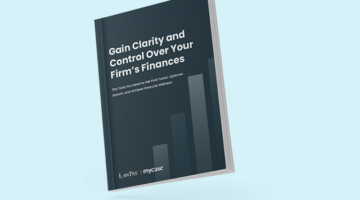Many years ago I worked at Cadwalader, which is many fine things, including a hotbed of collateralized debt obligation (or CDO) attorneys and advisers. As a result, enough CDO understanding rubbed off on me to be skeptical when I read a New York Times article that mentioned, “More banks are lending against art as collateral. Some are even starting to create collateralized debt obligations with art as the underlying asset ….” (emphasis is mine). It sounded suspicious, so I decided to consider what a typical CDO looks like and analyze the probability of someone creating an “Art CDO” to determine its feasibility and whether or not I would want a piece of it.
A CDO is an investment product that starts with the creation of a corporate entity that purchases a bunch of fixed-income securities which comprise the underlying assets. Those underlying assets are often mixed to dissipate risk and can include loans, bonds, mortgages, credit card debt, synthetic obligations and structured finance products. Those mixed, fixed-income securities provide periodic payments or cash flow (as borrowers regularly pay back debt). The CDO manager then issues bonds to investors which are backed by the cash flow produced from the underlying assets. To compound the complexity (and further spread the risk), the bonds or shares in the CDO are divided into a number of tranches (or slices, if you want to avoid the finance vernacular). The slices each have different risk/reward profiles; the amount of interest paid to investors in one tranche depends on how much risk is associated with that tranche. The level of risk for each tranche is determined by a ratings agency. Ratings agencies make that determination by predicting the expectation of repayment of the underlying fixed income securities.
With that structure laid out, the statement in the New York Times immediately sounds at least partially wrong. Art is certainly considered an asset to many, but it is not a fixed income security asset. It does not provide cash flow; however, loans that are made with art as collateral can provide cash flow and can conceptually be bundled into a CDO-type product. Although not as catchy, perhaps the quote should have stated, “some are even starting to create collateralized debt obligations with loans collateralized with art as the underlying asset.” However, CDOs are generally comprised of more diversified assets than one type of loan (recall the need to spread risk). Even a collateralized loan obligation (CLO) would likely contain underlying assets that are more diverse than what is contemplated here.

Take Control Of Your Firm’s Finances With Tools Built For Success
Position your firm for long-term growth with better financial visibility and control. Learn how to track performance, manage spending, and plan strategically—download the full e-book now.
Beyond structure and semantics, other fundamental problems remain with the idea of creating a CDO or CLO exclusively out of loans collateralized by art – an Art CDO. First, there is no regulatory scheme for art loans that comes close to the extensive and well-established regulations related to usual CDO creation and the composition of the underlying assets. For example, CDOs comprised of credit card debt or commercial and residential mortgages have specific rules as to the composition of the loan bundles. It would be difficult to translate those regulations to underlying assets that are exclusively loans collateralized with art. Lack of regulation and opacity in the art loan market bring rise to questions about the terms of the art loans, quality of assets and credit reliability of borrowers.
Second, ratings agencies would have to create new rules and models to rate the fair value and risk of this new type of CDO which would be difficult and expensive. The art market is uniquely opaque, only auctions are public; sales of art through galleries or between individuals are private. Transparency is needed to determine fair market value and provide intelligent ratings. There is no such transparency for art loans. Indeed, small niche banking departments usually steeped in relationships and traditions are the norm in the art loan market. Without regulation and transparency in the art market, ratings agencies would not have the tools needed to provide insights into the value of the thing you are investing in.
Third, art loans are rife with peculiarities not found in other debt instruments. For example, lines of credit for art loans usually max at three years with most art loans usually lasting only one to two years. Compare that to the vast market in residential mortgages with 30 year terms. Furthermore, the art loan market is limited. One private bank’s marketing materials state that it only lends to persons with a collection worth over $10 million and it tends to lend against a diversified collection, not for individual pieces. Even with the influx of interest in the art market, especially internationally (which adds additional opacity and complexity), it remains unregulated, opaque, relatively illiquid and not likely large enough (yet?) to justify the expense of designing and implementing changes and regulations needed to realistically create new investment vehicles based on art loans.
Since art (especially contemporary art) has been spotlighted lately for selling at astronomical sums, I imagine someone is thinking about how to bundle loans that are likely increasingly being issued throughout the art world. In any event, I remain skeptical about the allure of an Art CDO as an investment. If I spend money in the art market, I want to have an object to hang on a wall, display on a shelf or even view electronically – at least I can get lost in the view and steal some moments to think.

Private Practice Lawyers: Rater Your Work With In-House Counsel
Please share your thoughts in this brief and anonymous survey.
Madeleine Giansanti Cag is an attorney with entrepreneurial tendencies, diverse corporate experience and a deep interest in the arts. She works for Axiom, the world’s largest and fastest growing non-traditional legal services firm. Prior to Axiom, she worked at Warner Chilcott, Cadwalader and O’Melveny & Myers.